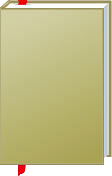

 |

|

The average rating for History of the Greek and Roman Theater based on 2 reviews is 4 stars.
Review # 1 was written on 2017-02-18 00:00:00 Bridget Sessa Bridget SessaI won this book from Reader's Digest. I would change the title to Strange Stories Seldom Told because I already knew many of them. I was often surprised, but I was never astonished, bewildered, or stupefied. My favorite part was the drawings and photos throughout. I didn't like how the stories skipped around in time. I was most surprised by the very abrupt ending. |
Review # 2 was written on 2016-07-20 00:00:00 Alicia Nisbet Alicia NisbetThe Time Book A Brief History from Lunar Calendars to Atomic Clocks Overview: This book details ways in which time has been counted among different cultures and time periods. W.4.2 Write informative/explanatory texts to examine a topic and convey ideas and information clearly. RI.4.5 Describe the overall structure (e.g., chronology, comparison, cause/effect, problem/solution) of events, ideas, concepts, or information in a text or part of a text. Focus: Compare and Contrast Step-by-Step: 1. Introduce the text by informing students that keeping track of time has changed over the years. Tell them to pay attention to similarities and differences the author makes in the text. 2. Read p.10-11: Discuss the similarities and differences the author presents for the ways in which people, bees, cicadas, birds, plants, and squirrels seem to keep up with time. 3. Read p. 22, as you read, create a Venn Diagram or a double-T chart in order to generate a list on the ways the moon and sun calendar are the same and different. 4. Read page 32- as you read, have students help create a list (in a Venn Diagram or double-T chart) on the board on the ways in which the Mayans told time. 5. Then read page 34 and add ideas to the graphic organizer on how the Romans told time. 6. Lastly, have students decide how these two cultures can be compared in their approach to telling time. Circle these ideas and rewrite them in the middle of the diagram or draw an arrow pointing these similarities the middle of the graphic organizer. 7. Challenge students to write about a topic in which they can include comparisons and contrasts. Have them share with a partner an idea they may consider for comparing and contrasting. Allow some students to share feedback with the whole class. Expected Outcomes: Students should understand when to use compare and contrast and to use it on a topic that they are knowledgeable of, or one that can be researched. Students should be able to plan for a compare and contrast writing using a Venn Diagram or double-T chart. |
CAN'T FIND WHAT YOU'RE LOOKING FOR? CLICK HERE!!!